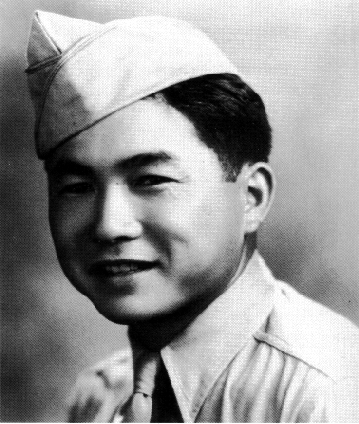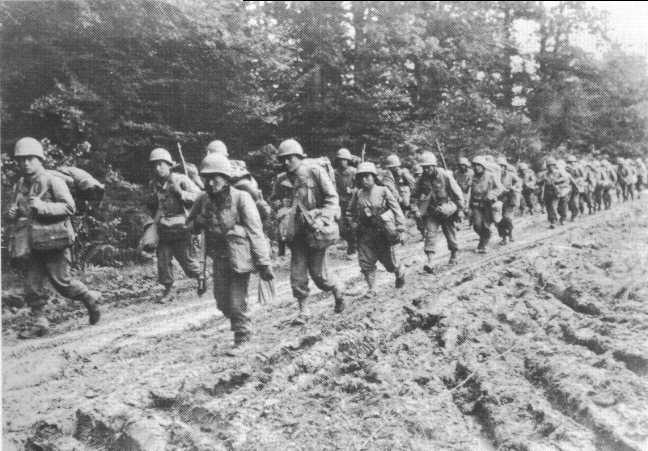THE EYE: STORM FRONT (Part One)
- Daniel García Ordaz

- Mar 14, 2018
- 5 min read
Updated: Jan 31, 2021
Life in the Valley as a hurricane approaches . . .
(Published originally in The Valley Morning Star, Harlingen, on the eve of the 2006 Hurricane Season.)
This four-part series gives a glimpse of the Valley before, during and after the hurricane through the interweaved story of a Rio Grande Valley family caught in the many storms of life.
EDITOR'S NOTE: In September 1933, the Rio Grande Valley was struck by Storm No. 11, causing 40 deaths, 500 injuries and $17 million in damages. Over the next four days, a series of articles will chronicle the events surrounding Hurricane No. 11 through the eyes of a San Benito family — the Tanamachis.
Life in the Valley as a hurricane approaches
By DANIEL GARCÍA ORDAZ Valley Morning Star
On Oct. 29, 1944, U.S. Army Pvt. Saburo Tanamachi led a charge over a hill near Biffontaine during World War II. He was an American soldier fighting the Germans in France in a unit of Japanese descendants called to rescue a group of stranded Texan soldiers.
Tanamachi had come a long way from his hometown of San Benito and the hurricane that struck the Rio Grande Valley in 1933 that almost took his life.
The Lower Rio Grande Valley of Texas in 1933 was a paradox. It was a time of peace and a time of turmoil, a time of progress and a time of decline.
A system of irrigation canals brought agriculture to the arid land. The warm climate and fertile ground allowed farmers to grow a variety of citrus fruit, sugar cane and winter vegetables, but the heat required developers to build ice plants to keep the crops cool en route to market. A light winter frost could boost growth and a freeze could ruin a season.
Citrus trees were not the only imports from Japan. Small pockets of Japanese American farmers had once been well received, but in recent years their growing numbers were discouraged. Among the Japanese American families in the Valley by 1933 was the family of Kumazo and Asao Tanamachi, who eventually raised 13 children, including Saburo.
Scant paved roads made getting crops to market difficult, but a system of railroads connected the Valley to the rest of the country. The land made some men wealthy and kept their neighbors poor. Mexican Americans comprised a majority of the population but held a minority of political power.
The dark umbrella of the Great Depression had cast a desperate shadow on many Americans. “Stormy Weather” and “Boulevard of Broken Dreams” were among the most popular songs of 1933.
But after years of struggle and a frost that had almost wiped out the local citrus industry, the Rio Grande Valley Citrus Growers Association told the Mercedes News-Tribune that the citrus crop was expected to be 750 carloads - the largest shipment to date from the region. Financial resurgence seemed imminent, led by commercial hubs in Harlingen, Brownsville and Mission. Its neighbors were not far behind.
In 1933 Rio Hondo was home to two newspapers, an ice plant and numerous produce shipping interests. The “Spider Web” railroad connected the city’s packing sheds and canneries to the rest of the Valley. Rio Hondo was the leading crop-growing area in the Valley and the abundance of produce in the region helped to stave off hunger during the Depression.
In San Benito, a new post office was dedicated on April 15. Due to a likely federal error, the building came with a basement, which led locals to believe that somewhere in New England a post office with a porch, sans basement —planned for San Benito — was being raised.
Until the 18th Amendment was repealed in December, alcohol could easily be smuggled from Mexico. For those with money to spare, the Thayer-Rio Rico suspension bridge south of Mercedes led Valleyites across the Rio Grande to nightclubs like the Tivoli Café, Joe’s Place and the Rio Rico Dog Kennel Club for gambling, dog races, food and drinks.
The rest of the country also had cause to celebrate. After surviving an assassination attempt, President Franklin Delano Roosevelt came into office in March with the promise of economic recovery. On July 12, Congress passed the country’s first minimum wage law, guaranteeing workers 33 cents an hour.
Storm Front
The rampant optimism would soon be tempered by the start of the hurricane season. Until 2005, when the National Oceanic and Atmospheric Administration (NOAA) recorded 28 named storms, the 21 large storms of 1933 — then unnamed — made it the most active hurricane season in the Atlantic on record. Between June 1 and Sept. 17, there were 17 storms — seven of them hurricanes — that made landfall between Corpus Christi and Tampico, Mexico.
At the peak of the 1933 hurricane season was No. 11, the fifth to make landfall in Texas.
There were other close calls and near misses. On July 6, a hurricane whose center passed between Brownsville and Tampico, killed 35 in Mexico and created five-foot tides as far north as Port Aransas. While the storms brewing in the Gulf of Mexico caught the attention of Valleyites, a different kind of storm was brewing across the Atlantic and the Pacific.
In 1933, Adolf Hitler was named German Chancellor. An official boycott of Jewish businesses soon commenced and the first concentration camps were erected outside Berlin and Dachau. In the span of five days in July, Hitler was granted dictatorial powers and Japan withdrew from the League of Nations. Germany followed suit in October.
Meanwhile what would be classified today as a Category 2 hurricane that had targeted the Valley on Aug. 5 landed just below Matamoros. Heavy rains damaged buildings in Brownsville, but for the most part, the Valley had been spared.
Col. Sam Robertson, founder of San Benito and an early developer of South Padre Island, celebrated the reprieve with a quarter-page ad in the Valley Morning Star proudly announcing that his Del Mar beach resort in Boca Chica had survived the latest onslaught.
At first the Tanamachi family was equally pleased with the rain, as they were transplanting tomatoes. They had moved to a farm south of Los Indios from Hochheim, near Yoakum, after trying to farm in Beaumont. However, as the winds from the Aug. 5 hurricane strengthened, their house was badly damaged.
Saburo Tanamachi, then 16 years old, was born on April Fool’s Day in 1917, but he was sharp as a tack, planning the crop rotation on the Tanamachi farm. His sister, Yuri Nakayama, described him as an accomplished student who excelled in sports at Brownsville High School.
“He kept the wheels in gear and saw that the planting seeds were bought, fields plowed and prepared on time,” she wrote. “He did the payroll, saw that things went to market, the cotton picked and taken to the gin. Dad often commented on how well he could organize and schedule, like a fine-tuned watch.”
About a month after the Tanamachi family arrived in the Valley, storm No. 11 now loomed on the horizon. According to NOAA, it killed 79 people in the Turks and Caicos Islands as a tropical storm before roaring over Cuba on Aug. 30 as what would be known today as a Category 1 hurricane. It left 60 more dead in its wake and continued in a slight west-northwesterly direction, growing to a present-day Category 2 hurricane by Sept. 1.
If it continued on course, the eye would make landfall just north of the Valley and the region might be spared the brunt of the storm. But as the hurricane hovered far below Louisiana, just above the 25th parallel north, it suddenly turned westward — forever changing the course of Valley history.
To be continued ...
Tomorrow: Landfall














Comments